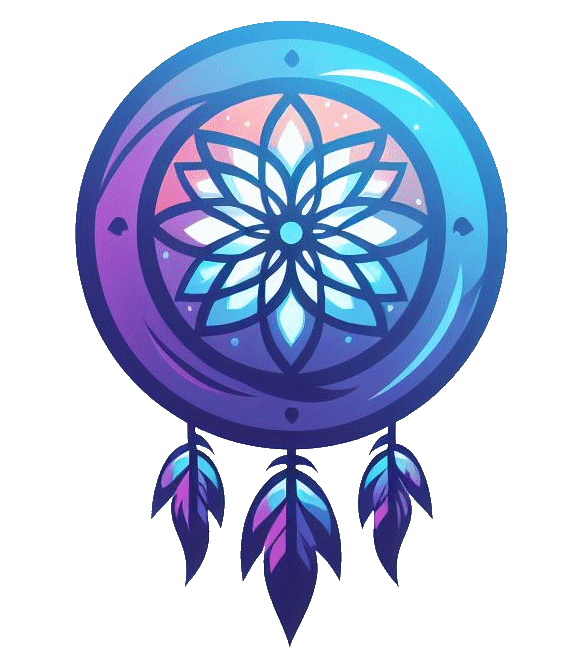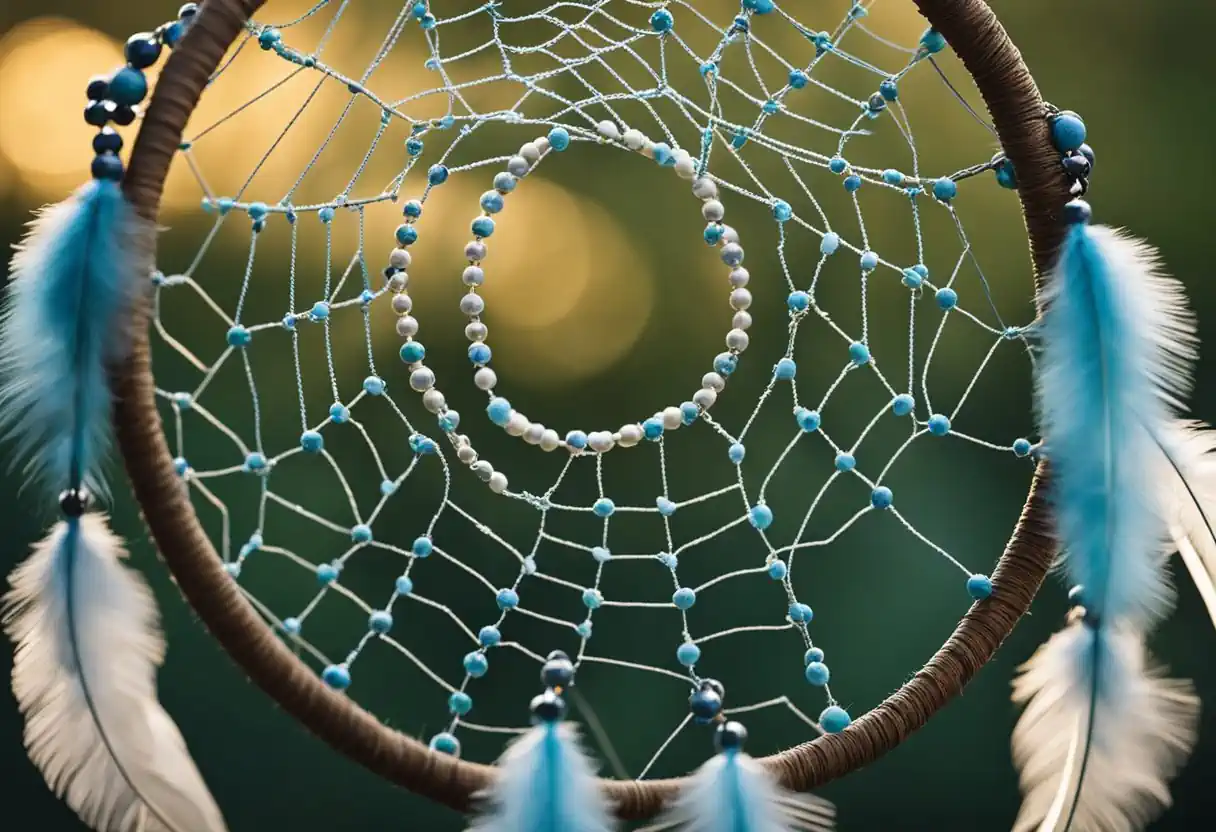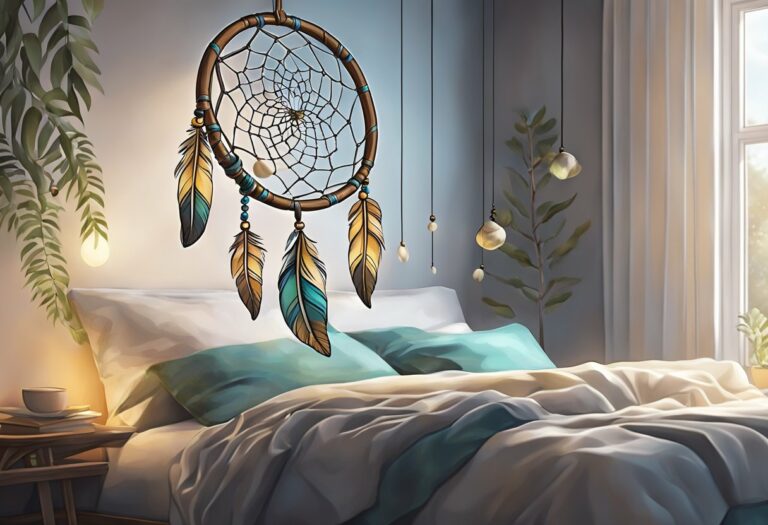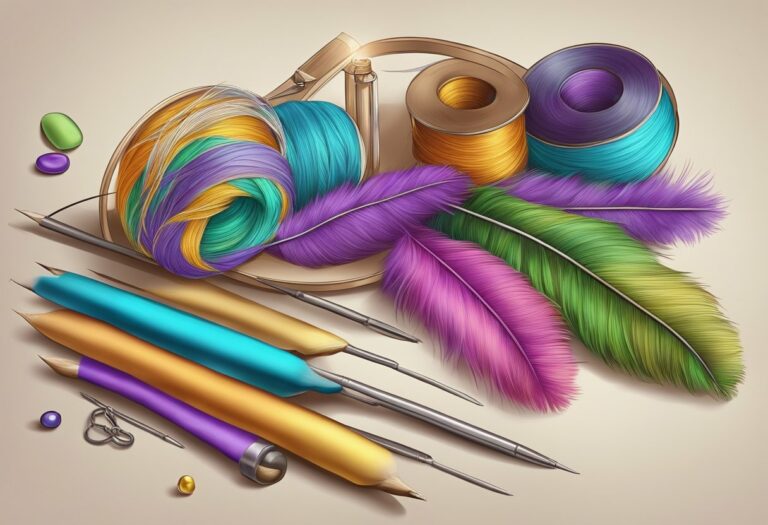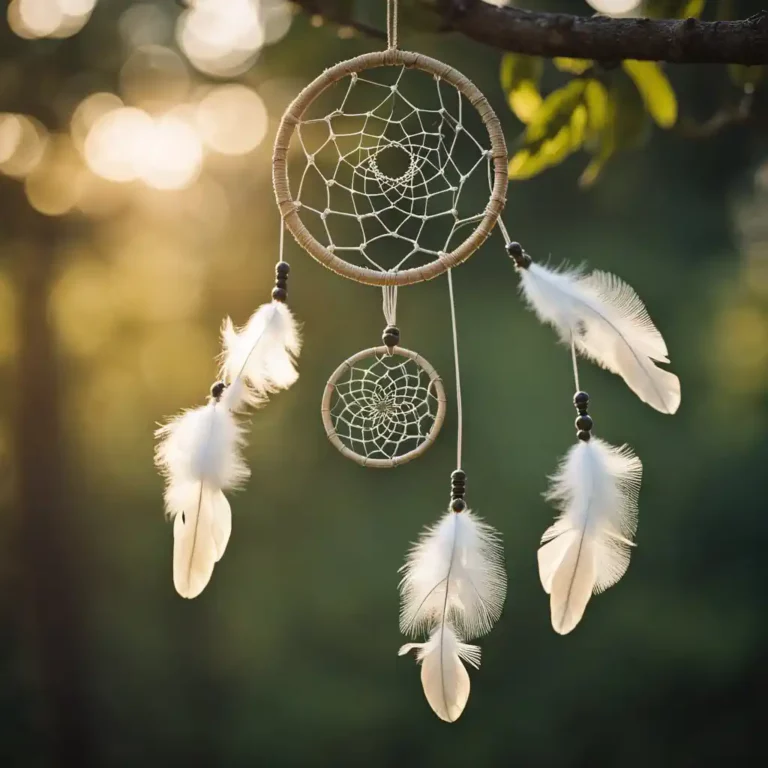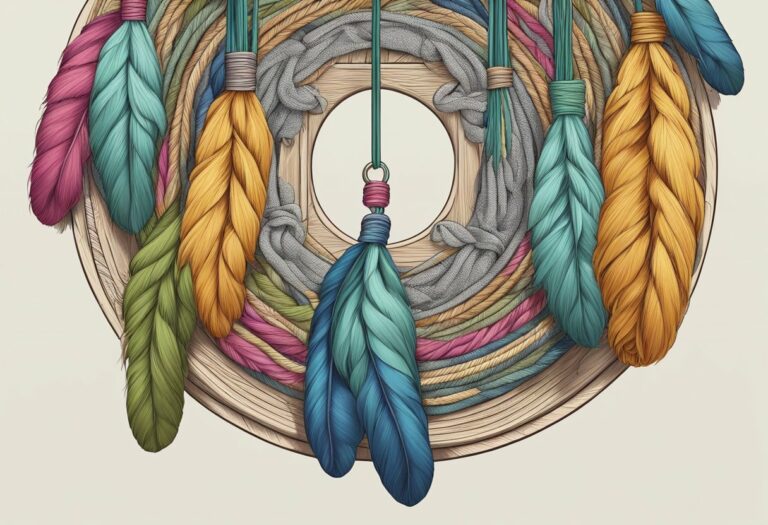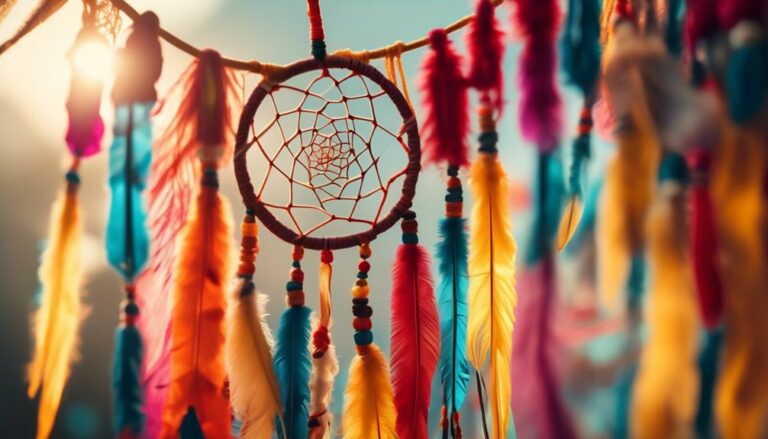How Does Dreamcatcher Work? An Explainer on the Native American Tradition
Dreamcatchers are a popular Native American tradition that has become a well-known symbol in modern culture. Many people believe that dreamcatchers have the power to filter out bad dreams and allow only good dreams to enter our minds. But how do dreamcatchers work, and what is the magic behind them?

The origins of dreamcatchers can be traced back to the Ojibwe people, who used them as a way to protect children from nightmares. The structure of a dreamcatcher consists of a hoop with a woven web of sinew strands in it, and feathers, beads, and crystals attached. It is hung above a bed or in a tipi or lodge, and the idea is that it catches bad dreams while allowing good dreams to pass through the hole in the middle of it.
The magic behind dreamcatchers is rooted in Native American spirituality and beliefs. They are thought to act as a spiritual portal, an instrument of the Great Goddess, and to conjure her divine powers over the room where the dreamcatcher is placed. Some people also believe that the feathers attached to the dreamcatcher represent the breath of life and that the beads and crystals have healing properties.
Key Takeaways: How Does Dreamcatcher Work?
- Dreamcatchers originated from the Ojibwe people and were used to protect children from nightmares.
- The structure of a dreamcatcher consists of a hoop with a woven web of sinew strands in it, and feathers, beads, and crystals attached.
- Dreamcatchers are thought to act as a spiritual portal, an instrument of the Great Goddess, and to conjure her divine powers over the room where the dreamcatcher is placed.
Origins of Dreamcatchers
Dreamcatchers have been a part of Native American culture for centuries. The Ojibwe people, also known as the Chippewa, were the first to create dreamcatchers. The Ojibwe believed that the night air was filled with both good and bad dreams. According to their legend, the dreamcatcher was created by a spider woman who protected children from bad dreams.
The dreamcatcher consists of a hoop made of willow, which represents the circle of life, and a web woven in the center, which is meant to catch bad dreams. The net is made of sinew, which is believed to have protective properties. The dreamcatcher is often decorated with feathers, beads, and other sacred items.
The dreamcatcher was traditionally hung above the bed or cradle of a child. The Ojibwe believed that the dreamcatcher would catch the bad dreams and allow the good dreams to pass through. The feathers on the dreamcatcher would then gently guide the good dreams to the child.
Today, dreamcatchers are used by many Native American tribes as a symbol of protection and unity. They are also popular with non-Native Americans as a decorative item. However, it is important to note that the commercialization and appropriation of dreamcatchers has caused controversy within Native American communities. It is important to respect the cultural significance of dreamcatchers and to understand their origins and meaning.
The Structure of Dreamcatchers

Dreamcatchers are made up of several components that work together to capture bad dreams and allow good dreams to pass through. In this section, we will discuss the two main components of dreamcatchers: the circle and the feathers.
The Circle Component
The circle is the most important component of a dreamcatcher. It represents the circle of life and the journey that we all take. The circle is usually made from a flexible material such as willow, and it is bent into a circular shape. The circle can vary in size, but it is usually around 3-4 inches in diameter.
The circle is then wrapped with a web of string or sinew. The web is made by tying a knot in the string and then wrapping it around the circle. As the web is created, it is important to leave a hole in the center of the circle. This hole allows good dreams to pass through while capturing bad dreams.
The Feather Component
The feather component of a dreamcatcher is also important. Feathers are attached to the bottom of the dreamcatcher and are used to guide good dreams to the sleeper. The feathers are usually from birds such as owls, eagles, or hawks.
The feathers represent the breath of life and are believed to carry our dreams to us. They are also a symbol of strength and courage. The feathers are attached to the bottom of the dreamcatcher with string or sinew.
In conclusion, the circle and feather components of a dreamcatcher work together to capture bad dreams and allow good dreams to pass through. The circle represents the circle of life, while the feathers guide good dreams to the sleeper. Together, these components create a powerful tool for protecting our dreams.
The Magic Behind Dreamcatchers
Dreamcatchers are fascinating objects that have been used by Native Americans for centuries. They are believed to have magical properties that can help ward off bad dreams and promote good ones. But how do they work?
There are different theories about the magic behind dreamcatchers. One theory is that they act as a filter, catching the bad dreams in their web and allowing the good ones to pass through the hole in the center. The bad dreams are then destroyed by the morning sun, while the good ones slip down the feathers to the sleeper below.
Another theory is that dreamcatchers are a spiritual portal, an instrument of the Great Goddess. They act like a sigil, conjuring her divine powers over the room where the dreamcatcher is placed. The feathers and beads attached to the dreamcatcher are believed to have symbolic meanings and can enhance the dreamcatcher’s power.
Regardless of the theory, dreamcatchers are seen as powerful and magical objects. They are often used in spiritual practices and ceremonies to promote healing, protection, and good fortune. Some people also use them as decorative items in their homes, believing that they can bring positive energy and good vibes.
In conclusion, the magic behind dreamcatchers is still a mystery, but their power and significance cannot be denied. Whether you believe in their magical properties or not, dreamcatchers are beautiful and meaningful objects that can add a touch of spirituality and positivity to your life.
Dreamcatchers and Dance

Dreamcatchers have long been a significant part of Native American culture and tradition. They are believed to have originated with the Ojibwe people and have been used for centuries as a way to ward off bad dreams and negative energy. In addition to their practical use, dreamcatchers also hold a spiritual significance in Native American culture.
One way in which dreamcatchers are used in Native American culture is through dance. Many Native American dances incorporate dreamcatchers into their performances as a way to honor their traditions and beliefs. For example, the hoop dance, which is performed by many different Native American tribes, often includes dreamcatchers as part of the dancers’ regalia.
In addition to being used in dance, dreamcatchers are also often given as gifts to loved ones. They are believed to bring good luck and positive energy to those who receive them. Dreamcatchers are also used in many Native American ceremonies, such as weddings and funerals, as a way to protect the participants from negative energy.
Contemporary Use of Dreamcatchers

Dreamcatchers have gained popularity in contemporary culture as a decorative item. They are often used as a symbol of Native American culture, spirituality, and beliefs. Dreamcatchers are commonly found in homes, offices, and other spaces as a way to add a touch of spirituality and cultural significance to the environment.
Some people also believe that dreamcatchers have a positive effect on their dreams. They use dreamcatchers as a way to prevent nightmares and promote good dreams. While there is no scientific evidence to support this belief, many people find comfort in having a dreamcatcher in their sleeping space.
In addition to being used as a decorative item and a tool for promoting good dreams, dreamcatchers have also been incorporated into modern fashion and jewelry. Many people wear dreamcatcher-inspired jewelry, such as necklaces and earrings, as a way to express their spirituality and connection to Native American culture.
It is important to note that the use of dreamcatchers in contemporary culture has been met with criticism from some members of Native American communities. Some argue that the commercialization and appropriation of Native American culture, including the use of dreamcatchers, is disrespectful and harmful.
Conclusion
Dreamcatchers are believed to work by filtering out bad dreams and allowing good dreams to pass through. The webbing in the center of the dreamcatcher is meant to trap bad dreams, while the feathers and beads hanging from the bottom are meant to attract good dreams.
The materials used to make a dreamcatcher can vary, and they are often decorated with symbols and designs that hold special meanings. Dreamcatchers have a rich cultural history and are still used today as a way to promote peaceful and restful sleep.
While there is no scientific evidence to support their effectiveness, many people find comfort and meaning in using dreamcatchers as a tool for dream interpretation and spiritual connection.
